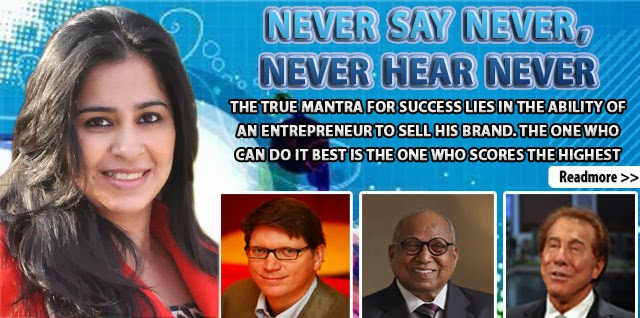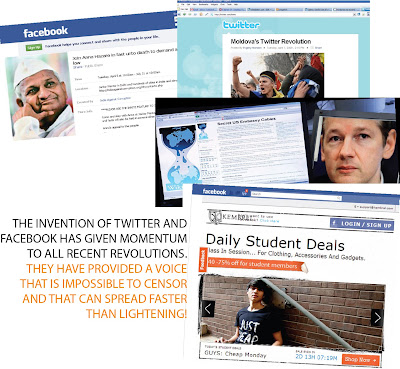Of HOST BRANDS, SYMBOLSAND ‘CULTURE BRANDING’
How long does it take to summarize two hundred years of a nation’s history? Ans: Exactly 181 seconds! This is the way Argentina is celebrating its bicentennial. The story of the nation is being told through a 181-second story of the county’s most loved and strongest brands. With the help of each brand, a tale is woven around the growth and development of the nation and the brand – for these brands are no ordinary brands; their makers didn’t just believe in earning profits but in earning pride for their nation. One 181-second story is on Quilmes beer. It traces the history of how the brewery was set up, which slowly changed the fortunes and lifestyles of the people of that area. As the nation prospered, so did Quilmes. When T.V. came to the country, Quilmes became the first advertiser. Then one day, Quilmes picked up its local soccer team, backed it with sponsorship, enthusiastically supported it through the years, while the team went ahead and started playing for the nation and one day got Argentinaits fi rst World Cup.
30 such local brands are being showcased to celebrate Argentina’s 200 years. This goes on to show that brands are today symbols of our society and brand builders are even society builders. Brands have a symbolic power and some of them have so deeply ingrained themselves into our culture, that they even give consumers a way to identify themselves – I am who I am partly because of the brands I use.
Turn your brand into a ‘host’ brand
If your brand can become a part of the local culture and sneak into popular conversation, you have won the loyalty of your consumers. In my previous write-up, I mentioned how interesting ‘brand stories’ make the brand more endearing and popular than just plain facts about its various attributes. Well, the best brand stories are those that are in sync with the culture of the country. The brand that understands the cultural sensibilities of its consumers always has the upper hand. As Julien and Eric remarked in their study on branding, marketers must view branding as a “culturally malleable” mode of communication.
The FIFA World cup fever is on as everybody from Timbuktu to Tamil Nadu, from Beijing to Bhubaneswar will be engrossed in this mega event. Sab Miller, the South African beer brand, did not waste this opportunity to connect with people. It may not be the ‘offi cial beer’ of FIFA, but it found a way using its culture knowledge. “Bula Boot” is one such typically African concept. It’s all about spontaneously having a party from the ‘boot’ of your car, usually near a sports match, or music concert. SAB Miller distributed many Bula Boot kits. 100 teams of tow people went around the various football venues with South African fl ags, chairs and the beer to, well, Bula Boot. It sure booted out the offi -cial sponsor of FIFA, Budweiser, out of everyone’s mind. SAB used its cultural heritage brilliantly to gain the upper hand. Today, it’s extremely important to stay culturally relevant. The American T.V. channel Telemundo, which broadcasts in Spanish, went ahead and got research done to understand the Latin community better and to fi nd out what they identifi ed with, demanded and wanted. Gone are the days when just demographic studies were enough. This time, the research studied cultural infl uences, sexual preferences, and other such issues. They uncovered a spectrum of rich identities, which were overlooked earlier by marketers. On the basis of this, Telemundo can and will create newer, more relevant T.V. programmes – and of course, keep its lead vis-à-vis other T.V. Channels.
Brands are symbols
Clearly, brands are not just making a difference to the bottom lines of companies, but to our way of life too. They are infl uencing us socially, culturally and even po-litically. When Tunisian-born French citizen Tawfi k Mathlouthi launched the Mecca Cola in France, he was not competing against just Coke or Pepsi. It was a symbolic war against Americanism. It just goes on to prove better that brands are symbols of our society. Coke symbolized everything American, and Mecca Cola anti- American. Mecca-Cola versus Cola-Cola is a fi ght of not just cultures but politics too. Tawfi k could easily win an election, for Mecca Cola symbolizes his ideology.
This is a fact that brands have begun to aggressively leverage their intended product attributes. Disney is not just a fi lm company or a theme park. Disneysymbolizes children’s entertainment –when you choose Disney, your mind thinks, “If it’s Disney, it’s good, safe and right for my kids.” Disney is very careful about this image. It will not make fi lms or products, which are not 100% family safe. Similarly, Nike is loved because of its symbolism and its rich stories woven around culture. It used the African- American vernacular and imagery in its advertising. Using the ‘ghetto culture’, it subtly told Americans to participate actively in sports.
For your brand to last in the memory of consumers and outlast competition, it needs to represent something. While all beer brands advertised fun and relaxation in their ads, Corona beer decided to be a little different. Corona’s ads promoted the concept that relaxation meant an ideal American holiday – that is, a tranquil beach vacation, beer and getting away from it all. Americans loved the positioning and soon, this bargain basement-beer became the choice of overworked Americans. You could escape from mundane routines and ‘chill out’ with Corona.
Escape you could also with another drink, which studied culture deeply andused it to market their brand, a move that shook up even biggies like Coke and Pepsi. Launched as a small start-up, the company began to symbolize the ‘hillbillies’, the not-so-sophisticated and uncultured gentry, as being the consumers of their drink. Sales blew through the roof in the non-urban, working class of the country. When the society changed its profi le, Mountain Dew changed its symbolizations too. In the nineties, it was ‘Do the Dew’. Bored of mundane jobs, the youth wanted something to get their adrenaline juices fl owing. So Mountain Dew now symbolized extreme sports and daredevil stunts. The society was looking for symbols to show their masculinity – a Mountain Dew in hand gave them that. A long time back, the Marlboro cowboy had done the same symbolisation. But the Marlboro Man is dead today and smoking is ‘uncool’.
Today’s consumers use brands to build their own identities. Some even like to be known by the brands that they use. If your brand can give them that, it will survive, and if the identity takes into account the cultural aspects of the consumers, they will love your brand and make it immortal.
FIFA – the global benchmark
Brands need to value the culture, using the uniqueness of target groups to market themselves accordingly. Those who have done that, have been the most successful. McDonald’s may be the most global brand, but it has customised the most to suit each culture. Tesco in UK recognized a large Polish community, so it launched the “own-brand” products for the home-sick Poles in UK. A mobile operator in Germany launched brands specifi cally targeting the Turkish population in Germany. In south India, Meera Hair Powder is what people reach out to once their hair problems start. Shampoos are good, modern, convenient, but we go back to traditional solutions when in trouble. By keeping its name, packaging and promotion totally traditional, Meera has been able to compete with the so called ‘Western’ concepts of hair shampoo!
It pays to be in touch with your culture and build brands around it. After all, very few brands enjoy global acceptance like FIFA – the only truly global game and global brand. Kofi Annan once remarked how he envied the football World Cup, as the “only truly global game, played in every country by every race and religion,” was more universal than UN – FIFA has 207 members, while the UN has only 191. The whole planet loves FIFA and being a part of the World Cup is a matter of national pride for any country – except of course the UN!
Few brands, corporations can transcend all barriers to be like FIFA and become global favorites. For the lesser mortals, let us look deeply into the cultures, pull out relevant stories and weave our brands into them. It’s the most long-lasting strategy and might someday turn your brand into a globally mesmerizing identity like FIFA.


Comments
Post a Comment